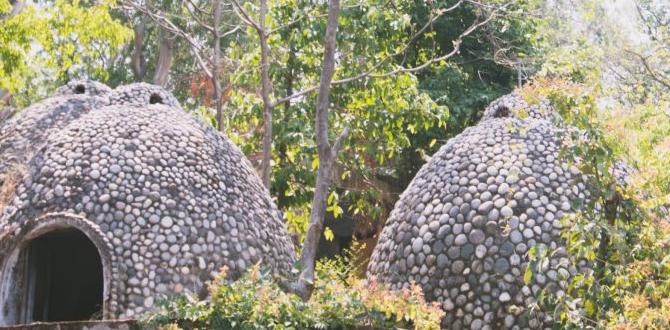Quick Summary: Planning a move or extended stay in Australia? Our essential tips for exploring neighborhoods cover understanding lifestyle, transport, amenities, and local vibes. Discover how these factors help you find the perfect Australian spot with confidence and ease.
Moving to a new country, especially one as vast and diverse as Australia, can feel like a huge adventure. When it comes to picking the right neighborhood, it’s easy to feel a little overwhelmed. You want a place that feels like home, right? A spot where you can easily get around, find what you need, and truly enjoy your surroundings. Don’t worry, finding your perfect Australian patch is simpler than you think. We’ll guide you through the key steps to make smart choices so you can settle in comfortably and happily.
Finding Your Perfect Australian Neighborhood: A Simple Guide
Australia is a land of incredible variety, from bustling city centers to laid-back coastal towns and serene rural landscapes. Each state and territory boasts unique charms, and within them, countless neighborhoods offer distinct lifestyles. Choosing the right one is crucial for making your Australian experience enjoyable and stress-free, whether you’re relocating for work, study, or a change of pace.
As Michael C. Herrera from Journey Essentials, I’ve learned that the best travel (and living) advice comes from simplifying the complex. Think of this guide as your friendly copilot, helping you navigate the choices and land in a neighborhood that truly fits you. We’ll break down what to look for, how to research, and what questions to ask. Ready to explore?
1. Understand Your Lifestyle Needs
Before you even look at a map, take a moment to think about what’s important to you in your daily life. This is the foundation of finding a neighborhood that will make you happy.
Urban Buzz vs. Suburban Serenity
Are you someone who thrives on the energy of the city? Do you love having restaurants, cafes, and entertainment right on your doorstep? Or perhaps you prefer a quieter setting, with more green space, peace, and a slower pace of life?
- City Living: Think convenient public transport, a wide array of shops and services, and a vibrant social scene.
- Suburban Life: Often offers more space, family-friendly environments, parks, and a strong sense of community.
- Coastal Charm: If beach access, water sports, and a relaxed atmosphere are your priorities, look towards areas near the coast.
- Rural Retreat: For peace, quiet, and a connection to nature, consider areas further from major urban centers.
Family Focus or Solo Adventure?
Your life stage significantly impacts neighborhood choice. Families might prioritize good schools, playgrounds, and kid-friendly activities. Solo travelers or couples might look for lively social scenes, convenient commuting, or proximity to hobbies and interests.
Work & Commute Preferences
How will you get to work or study? Researching public transport links (trains, buses, trams) and major road networks is essential. Consider the daily commute time – is it something you’re willing to do every day?
For instance, if you’ll be working in the Sydney CBD, looking at suburbs with direct train lines into the city will save you a lot of time and stress. Similarly, in Melbourne, understanding the tram network is key to finding convenient areas.
2. Researching Neighborhood Characteristics
Once you have a clearer picture of your ideal lifestyle, it’s time to dive into research. The internet is a treasure trove of information, but knowing where to look is half the battle.
Demographics and Community Vibe
Does the neighborhood consist mostly of young professionals, families, retirees, or a mix? Different demographics contribute to the overall feel of a place. Websites that track property sales and rentals often provide demographic data. You can also look at local council websites for community profiles.
Amenities and Services
What facilities are important to you? Make a list and check what’s available nearby.
- Healthcare: Proximity to doctors’ offices, hospitals, and pharmacies.
- Education: Availability and reputation of schools (if applicable).
- Shopping: Access to supermarkets, local shops, and shopping centers.
- Recreation: Parks, sports facilities, gyms, libraries, community centers.
- Dining & Entertainment: Cafes, restaurants, bars, cinemas, cultural venues.
Safety and Crime Rates
Feeling safe in your neighborhood is paramount. Most Australian police services provide online crime maps or statistics for specific areas. While no place is entirely crime-free, understanding local trends can help you make an informed decision. Researching through official government websites is a reliable way to get this information.
For example, the Victoria Police offers data and statistics that can be invaluable when evaluating areas in Victoria.
Green Spaces and Parks
If you value nature and outdoor activities, look for neighborhoods with ample parks, gardens, walking trails, or even proximity to national parks or beaches. These spaces are vital for well-being and offer great opportunities for relaxation and recreation.
Consider mapping out parks with tools like Google Maps to see how much green space is accessible from potential homes.
3. Navigating Transport and Accessibility
Australia is a large country, and efficient transport can make or break your day-to-day experience. Understanding the public transport system and driving conditions in different areas is crucial.
Public Transport Options
Major Australian cities have extensive public transport networks, including trains, buses, trams, and ferries. Familiarize yourself with the system in your target city.
- Trains: Often the fastest way to travel long distances within cities and between suburbs.
- Buses: Cover wider areas, including suburbs not reached by trains.
- Trams: Prevalent in cities like Melbourne, offering convenient CBD and inner-suburb travel.
- Ferries: Essential for cities like Sydney, offering scenic and practical cross-harbor or bay commutes.
Check the websites of the relevant transport authorities for route maps, timetables, and fare information. For example, Transport for NSW provides comprehensive details for Sydney and surrounding regions.
Driving and Parking
If you plan to drive, research traffic patterns, especially during peak hours. Parking availability and cost can vary significantly between inner-city areas and outer suburbs. Understanding these factors will help you assess the practicality of living in a particular neighborhood.
Walkability and Cycling
Some neighborhoods are incredibly walkable, meaning you can get to shops, cafes, and services on foot. Others are more bike-friendly, with dedicated paths and bike lanes. Websites like Walk Score (while often US-focused) can give you an idea of a neighborhood’s walkability score, and you can often find similar local data or map overlays in Australia.
4. Exploring Local Culture and Amenities
A neighborhood’s culture and the services available truly shape your living experience. What makes this place tick?
Cafes, Restaurants, and Bars
Australia has a vibrant food and drink scene. Do you want to be near trendy cafes for your morning coffee, lively restaurants for dinner, or relaxed pubs for an evening out? A quick search on Google Maps or local review sites can reveal the density and type of eateries in an area.
Shops and Services
Consider your shopping habits. Do you need a large supermarket within walking distance? Are there specialty stores you frequent? What about essential services like post offices, banks, and childcare?
Arts, Culture, and Entertainment
Depending on your interests, you might want to be close to galleries, theaters, live music venues, or community events. Research local event calendars and community hubs.
Markets and Local Produce
Many Australian suburbs have vibrant weekend markets, offering fresh produce, handcrafted goods, and a great community atmosphere. If this appeals to you, seek out neighborhoods known for their markets.
5. Visiting and Experiencing Neighborhoods Firsthand
Online research is invaluable, but nothing beats experiencing a place yourself. If possible, visit your potential neighborhoods before making any commitments.
Daytime vs. Evening Exploration
Visit a neighborhood at different times of the day. What’s it like on a busy weekday morning versus a quiet Sunday afternoon? How does it feel after dark? This gives you a more realistic picture of daily life and safety.
Interacting with Locals
Strike up conversations with people you meet – shopkeepers, cafe staff, or residents in parks. Ask them what they love and what they find challenging about living there. Most Australians are friendly and happy to share their insights.
Timing Your Visit
If you can, visit during different seasons if you’re moving from overseas. This will give you a feel for the climate and how locals adapt. Planning your visits around local festivals or events can also give you a great feel for the community spirit.
6. Practical Considerations for Settling In
Beyond the lifestyle aspects, several practical matters need consideration when choosing your Australian home.
Housing Market: Renting vs. Buying
The rental market can be competitive, especially in popular areas. Research typical rental prices for different property types (apartments, houses) in your target neighborhoods. Websites like realestate.com.au and domain.com.au are essential for this.
Cost of Living
While major cities like Sydney and Melbourne are generally more expensive, the cost of living can vary significantly even between adjacent suburbs. Factor in costs for groceries, utilities, transport, and entertainment.
Local Council Information
Your local council (or ‘council’ as it’s known in Australia) is a fantastic source of information. Their websites often provide details on local services, development plans, community facilities, waste collection schedules, and more. You can usually find your local council by searching for “[Suburb Name] Council”.
For example, the City of Sydney council offers details on services and opportunities within the Sydney metropolitan area.
7. Special Considerations: Comfort and Convenience
For a truly stress-free stay, especially during longer trips or if managing specific personal care needs, comfort and convenience are key. Think about how your chosen neighborhood supports these needs directly.
Access to Essential Personal Care Items
For families traveling with young children or adults who use products like adult or child diapers for travel, ease of access to these items is vital. It’s reassuring to know there are readily available local pharmacies or supermarkets that stock these necessities. This reduces the worry of running out and makes managing routines much simpler, allowing you to focus on enjoying your surroundings rather than potential logistical challenges.
Proximity to Pharmacies and Medical Services
Being close to a pharmacy or a clinic can offer peace of mind. It means quick access to medication, basic health advice, or immediate care if needed, contributing to a more relaxed and secure stay.
Family-Friendly Facilities
If you’re traveling with children, neighborhoods offering good parks, playgrounds, family-friendly cafes, and activities can make a huge difference. Easy access to these facilities means less stress and more opportunities for everyone to have fun.
Table: Quick Neighborhood Comparison Tool
Here’s a simple tool to help you compare potential neighborhoods. Fill it out based on your research and priorities.
| Feature | Neighborhood A (e.g., Inner City) | Neighborhood B (e.g., Outer Suburb) | Neighborhood C (e.g., Coastal Town) |
|---|---|---|---|
| Vibe | Energetic, busy, diverse | Quiet, family-oriented, residential | Relaxed, beach-focused, outdoorsy |
| Transport Links | Excellent public transport (train, tram, bus) | Bus routes, requires car for some errands | Limited public transport, bus service, good for cycling |
| Amenities (Groceries, Cafes) | Very high density, wide variety | Local shops, larger supermarket nearby | Local shops, cafes, supermarket in nearby town |
| Parks/Green Space | Limited, small parks | Good local parks, playgrounds | Beach access, coastal paths, nature reserves |
| Estimated Rent (Monthly) | $$$$ | $$$ | $$$ |
| Good for… | Young professionals, singles, arts lovers | Families, retirees, those seeking peace | Surfers, beach lovers, those seeking a slower pace |
FAQ: Your Australia Neighborhood Questions Answered
Q1: How do I find out about local events in a new Australian neighborhood?
A: Check the local council’s website – they often list community events, festivals, and activities. Local libraries, community centers, and notice boards in cafes are also great sources. Social media groups dedicated to the suburb can also be very informative.
Q2: What are the biggest differences between city and suburban living in Australia?
A: City living typically offers more convenience, a faster pace, a wider selection of entertainment and dining, and better public transport but can be more expensive and crowded. Suburban living usually provides more space, a quieter environment, and a stronger community feel, but often requires more reliance on a car.
Q3: Is it safe to explore new neighborhoods alone in Australia?
A: Generally, Australia is a safe country. However, like anywhere, it’s wise to be aware of your surroundings, especially when exploring unfamiliar areas for the first time, particularly at night. Stick to well-lit streets and populated areas initially. Official police websites can provide crime rate information for specific suburbs.
Q4: How much should I budget for rent in Australian neighborhoods?
A: Rental costs vary hugely by city and suburb. Major cities like Sydney and Melbourne are among the most expensive. Inner-city apartments are often pricier than houses in outer suburbs. Online real estate portals like realestate.com.au and domain.com.au are the best places to research current rental prices in your target areas.
Q5: What are “strata fees” or “body corporate fees” in Australia?
A: These fees apply if you buy or rent an apartment or unit in a building managed by a body corporate (also known as strata). They cover the costs of maintaining common areas like hallways, gardens, pools, and the building’s structure. These fees are usually paid monthly.
Q6: How can I assess the quality of schools in an Australian neighborhood?
A: For public schools, you can check their performance rankings on state education department websites. For example, the Victorian Curriculum and Assessment Authority (VCAA) offers resources. Private school websites will list their specific campuses and offerings. Also, talk to local parents if you can.
Conclusion: Your Australian Neighborhood Adventure Awaits
Finding the perfect Australian neighborhood is an exciting part of your journey. By understanding your personal needs, conducting thorough research, and experiencing places firsthand, you can make an informed decision that leads to comfort, happiness, and a true sense of belonging. Whether you’re drawn to the thriving energy of a city center, the peaceful streets of a suburb, or the sun-drenched coast, Australia offers a diverse tapestry of communities waiting to be discovered. Remember to consider all aspects, from transport and amenities to safety and local culture. Armed with these essential tips, you’re well-equipped to begin your search and embark on a rewarding chapter in the Land Down Under. Happy exploring!




